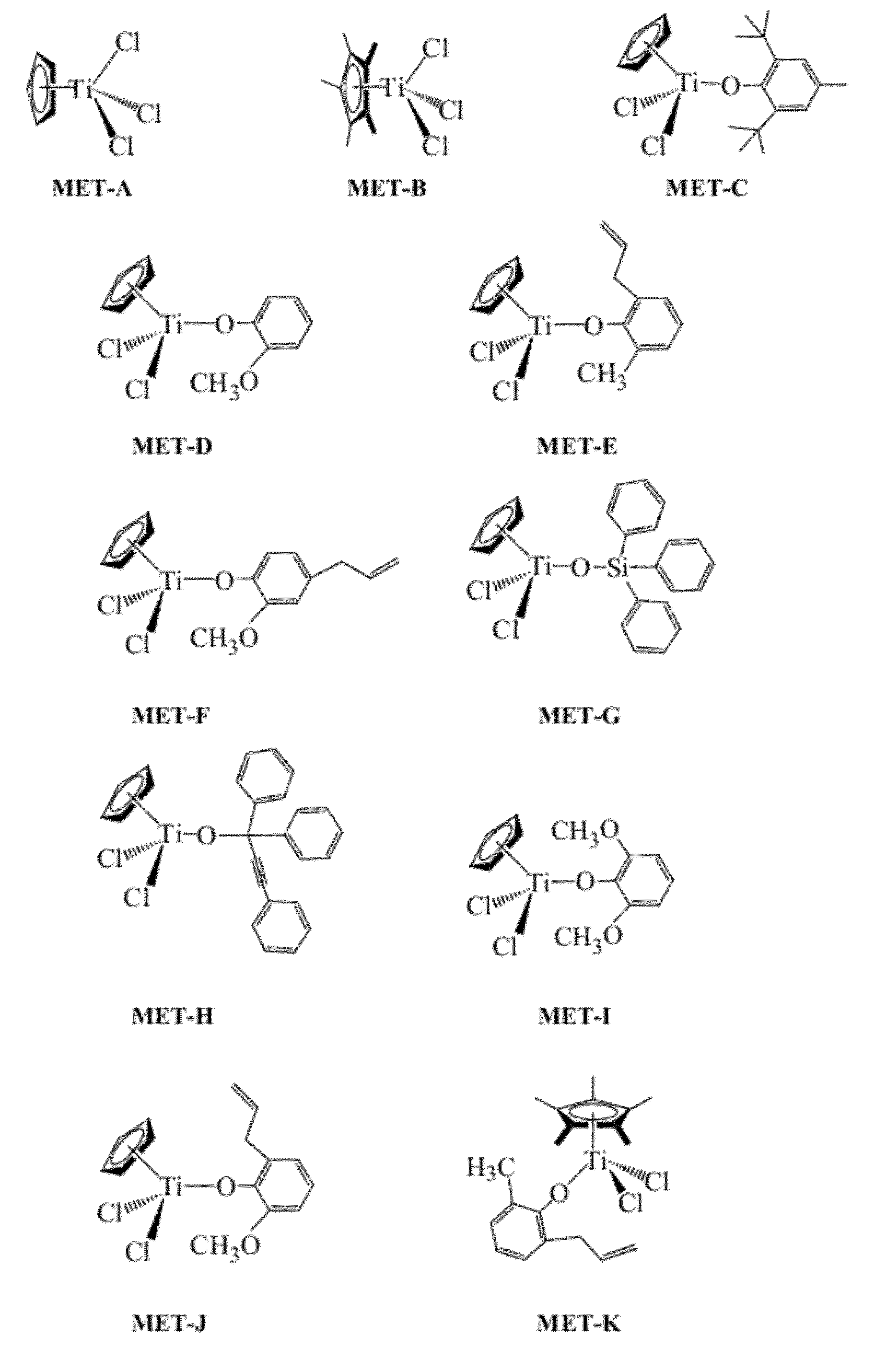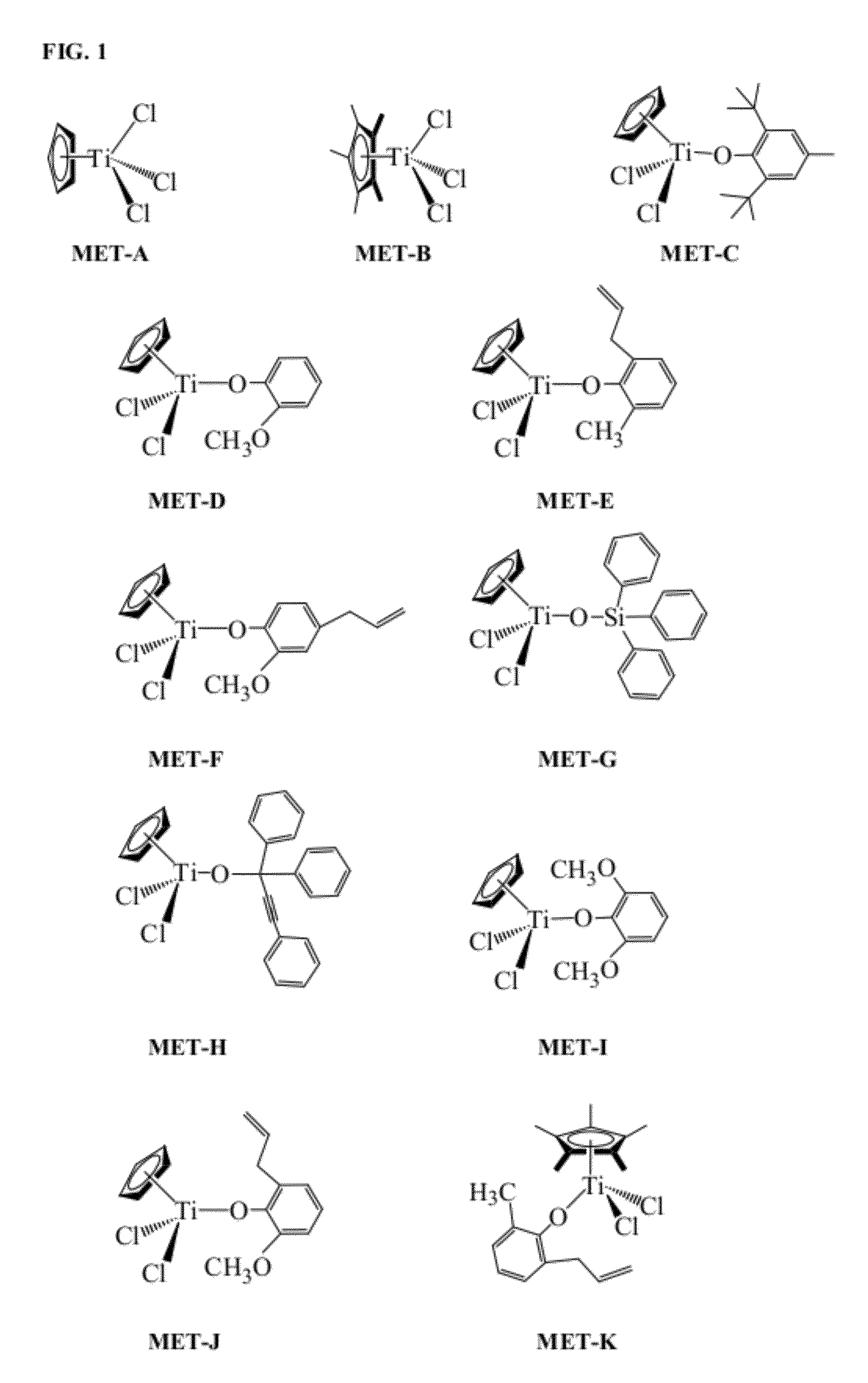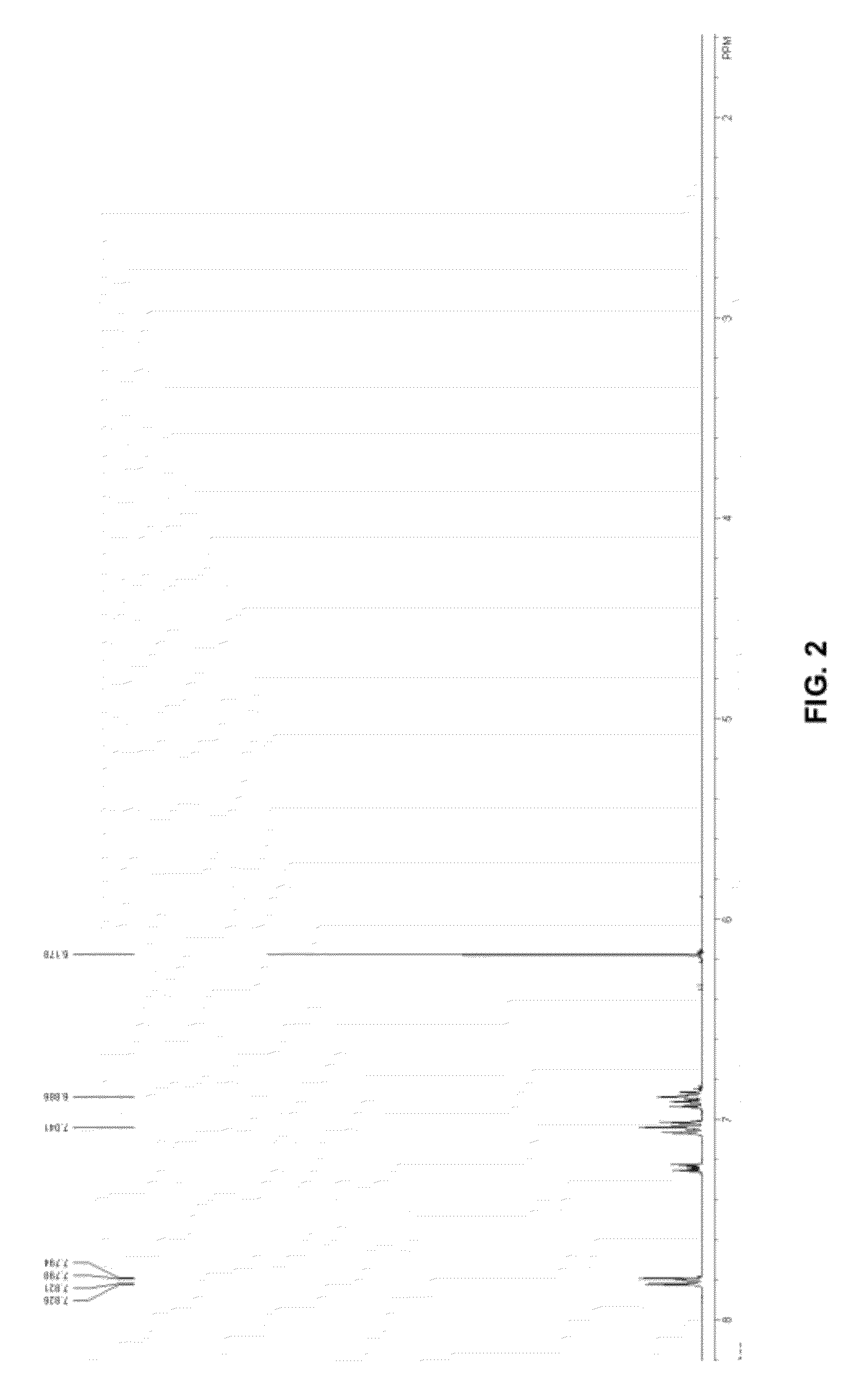Half-metallocene compounds and catalyst compositions
a technology of half-metallocene compounds and catalyst compositions, which is applied in the direction of catalyst activation/preparation, chemical/physical processes, and group 4/14 element organic compounds, etc., can solve the problems of difficult to duplicate the properties of the combination with other commercially viable catalyst systems, the molecular weight distribution of polyolefin resins produced using ballard catalysts is too large, and the structure is too long
- Summary
- Abstract
- Description
- Claims
- Application Information
AI Technical Summary
Benefits of technology
Problems solved by technology
Method used
Image
Examples
example 1
Synthesis of η5-cyclopentadienyl(2,6-di-tert-butyl-4-methylphenoxy)titanium dichloride, MET-C
[0237]MET-C was prepared as follows. Approximately 50 mL of toluene (˜35° C.) was added to a flask with a mixture of 0.97 grams (4.42 mmol) of η5-cyclopentadienyl titanium trichloride (MET-A) and 1 gram (4.42 mmol) of the lithium salt of 2,6-di-tert-butyl-4-methylphenol. The mixture was stirred at room temperature for 1-3 days. After solid LiCl was removed by centrifuge, and toluene was removed under vacuum, the resultant product was recrystallized in a solvent mixture of toluene and heptane. Approximately 1.39 g of MET-C were produced; the yield was 75%.
example 2
Synthesis of η5-cyclopentadienyl(1,1,3-triphenyl-2-propynoxy)titanium dichloride, MET-H
[0238]MET-H was prepared as follows. Approximately 1.1 g (5 mmol) of if cyclopentadienyl titanium trichloride (MET-A) was dissolved in 30 mL of diethyl ether, and the solution was cooled from −30 to −70° C. A mixture of 1.42 grams (5 mmol) of 1,1,3-triphenyl-2-propyn-1-ol and 0.8 mL of dry Et3N in 30 mL of diethyl ether was added over 30 min. The reaction mixture was stirred as room temperature overnight. A white solid was removed by centrifuge. A light orange solid was obtained after diethyl ether was removed under vacuum. The resultant product was recrystallized in toluene. Approximately 1.75 g of MET-H were produced; the yield was 80%. FIG. 2 illustrates the 1H-NMR analysis of the MET-H product.
example 3
Synthesis of η5-cyclopentadienyl(2,6-di-methoxyphenoxy)titanium dichloride, MET-I
[0239]MET-I was prepared as follows. Approximately 0.5 grams (2.28 mmol) of η5-cyclopentadienyl titanium trichloride (MET-A) and 0.35 grams (2.28 mmol) of 2,6-dimethoxyphenol were mixed in a cool toluene solvent (˜0° C.). After the reaction mixture was stirred at room temperature for 30 minutes, the temperature was increased to 90° C. and stirred overnight. A dark red solid was obtained after toluene was removed under vacuum. The product was recrystallized in toluene. Approximately 0.67 g of MET-I were produced; the yield was 91%.
PUM
| Property | Measurement | Unit |
|---|---|---|
| PDI | aaaaa | aaaaa |
| temperature | aaaaa | aaaaa |
| temperature | aaaaa | aaaaa |
Abstract
Description
Claims
Application Information
 Login to View More
Login to View More - R&D
- Intellectual Property
- Life Sciences
- Materials
- Tech Scout
- Unparalleled Data Quality
- Higher Quality Content
- 60% Fewer Hallucinations
Browse by: Latest US Patents, China's latest patents, Technical Efficacy Thesaurus, Application Domain, Technology Topic, Popular Technical Reports.
© 2025 PatSnap. All rights reserved.Legal|Privacy policy|Modern Slavery Act Transparency Statement|Sitemap|About US| Contact US: help@patsnap.com



